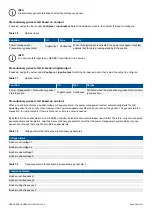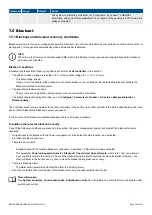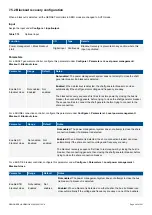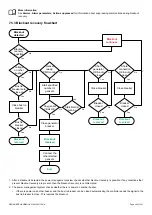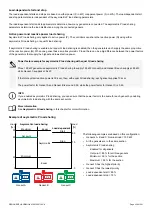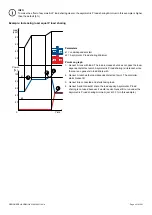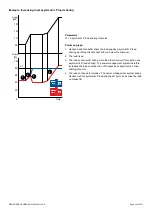
Load-dependent stop
The PMS calculates what the genset load percentage would be if the connected genset that is last in the priority order is stopped. If
this is lower than the
Load-dependent stop
limit, that genset will be stopped.
Example
The following graph shows how the genset load percentage start and stop function works. The system consists of three 1000 kW
gensets that use load sharing.
Genset load-dependent start limit: 90 %
Genset load-dependent stop limit: 70 %
0
500
1000
1500
2000
2500
3000
Power
[kW]
time
Genset 1
Genset 1 &
Genset 2
Nominal power
Consumed power
Available power
Genset 1, Genset 2
& Genset 3
Genset 1 &
Genset 2
Genset 1
1
2
3
4
5
6
7
8
1. Genset 1 is running.
2. The load builds up until it reaches 900 kW, which is 90 % of genset 1's nominal power. The PMS starts the next genset in the
priority order.
3. Genset 2 starts, and the load builds up until it reaches 1800 kW, which is 90 % of the nominal power for genset 1 and genset 2.
The PMS starts the next genset in the priority order.
4. Genset 3 starts, and gensets 1, 2 and 3 run. After a while the load starts to decrease.
5. The load reaches 1400 kW, which is 70 % of the nominal power for genset 1 and genset 2, after genset 3 is stopped. The PMS
therefore stops the last running genset in the priority order.
6. Genset 3 stops, and gensets 1 and 2 run. The load decreases.
7. The load reaches 700 kW, which is 70 % of the nominal power for genset 1, after genset 2 is stopped. The PMS therefore stops
the last running genset in the priority order.
8. Genset 2 stops, and genset 1 runs. The load is less than 90 %, so no additional gensets start. There are no other running
gensets, so the genset stop function is inactive.
7.4.9 Percent method and hysteresis
For the percent method the load-dependent start and stop hysteresis depends on:
•
The nominal power of the gensets
•
The priority of the gensets
•
The number of connected gensets
DESIGNER'S HANDBOOK 4189340911K UK
Page 237 of 521


















